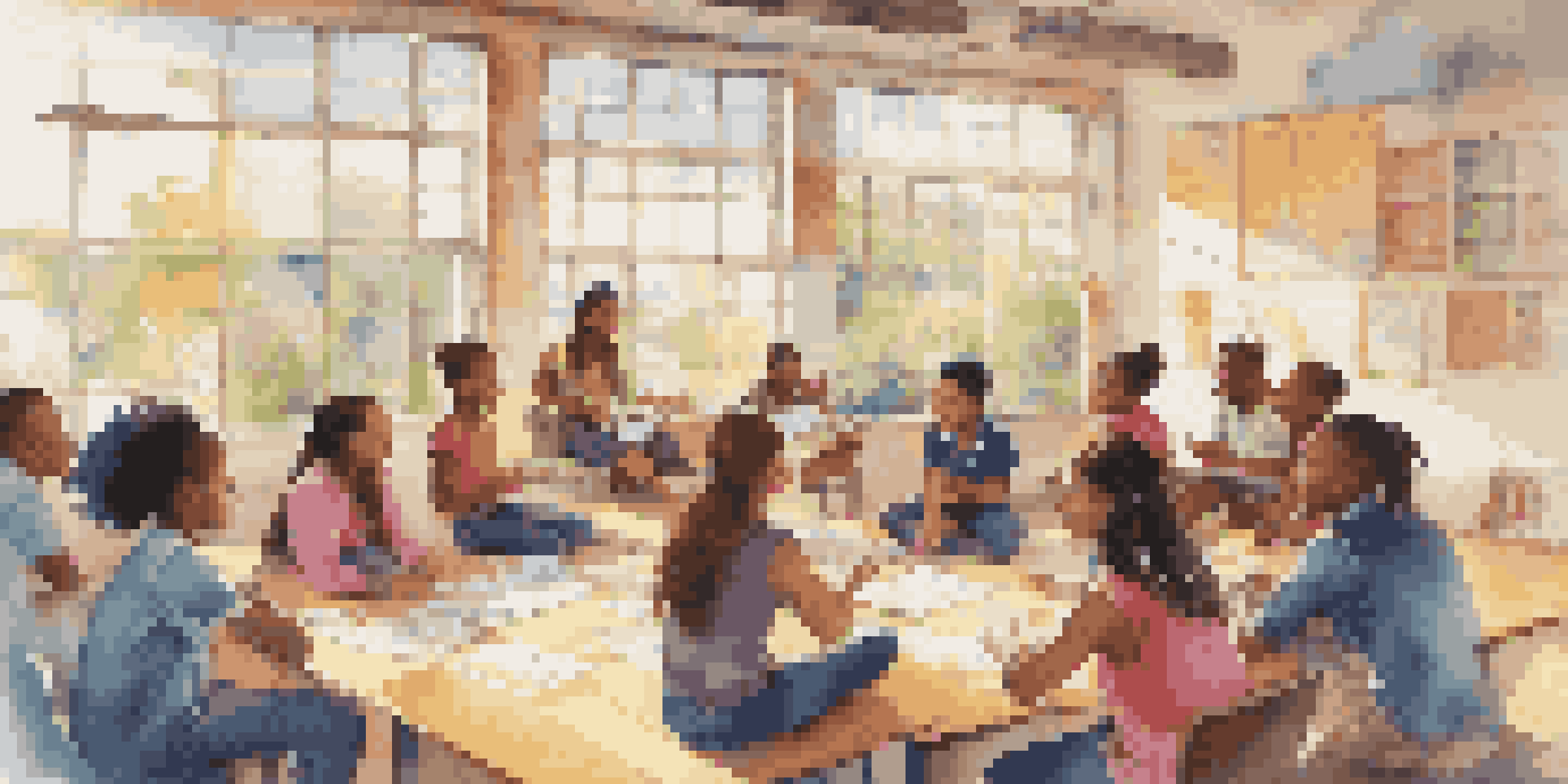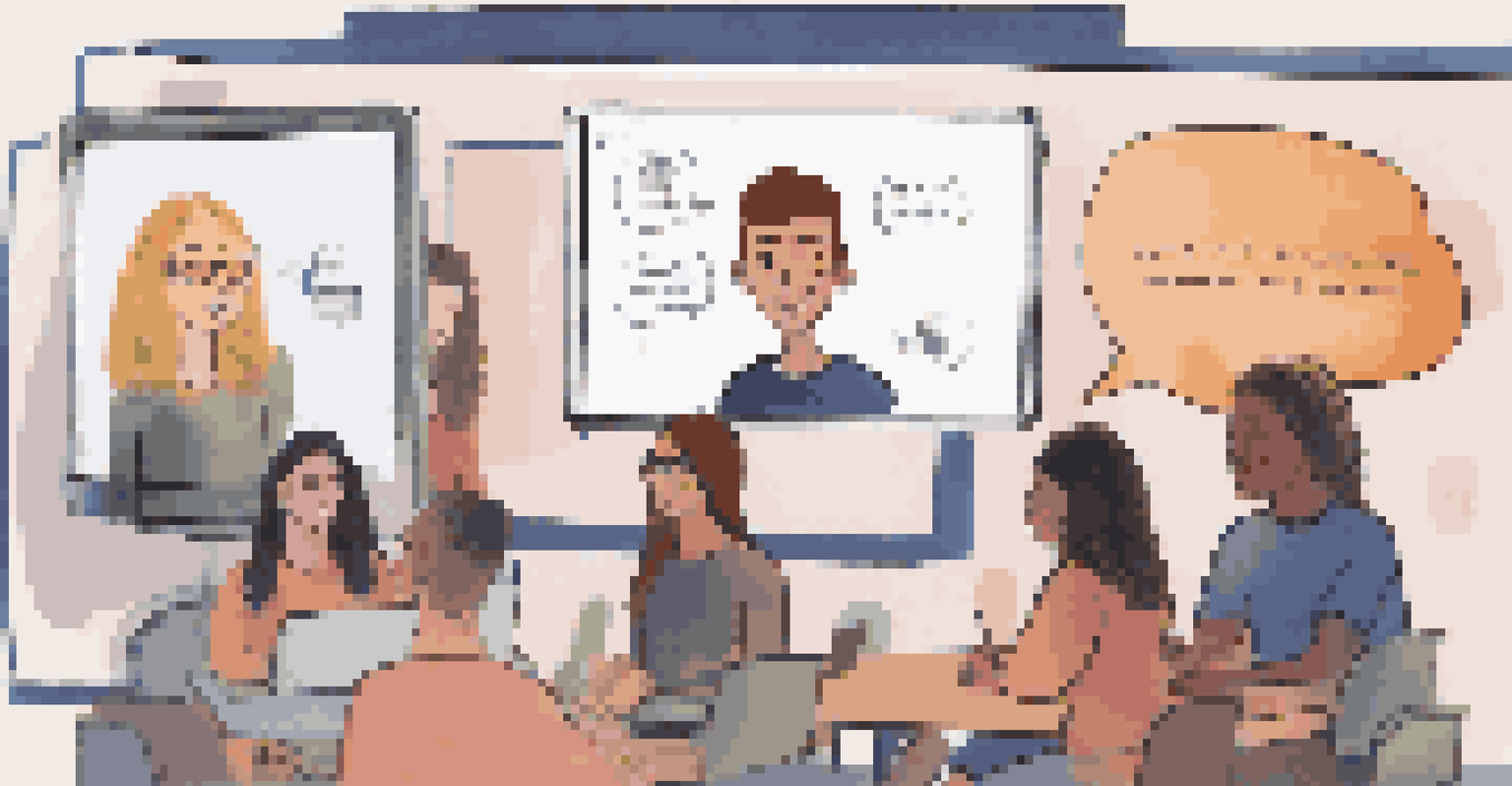The Role of Peer Learning in Enhancing Student Voice

What is Peer Learning and Why Does It Matter?
Peer learning is a collaborative educational approach where students learn from each other. This method not only fosters a sense of community but also enhances critical thinking and problem-solving skills. In a peer learning environment, students feel more comfortable sharing their thoughts and ideas, which is essential for boosting their confidence and engagement.
The best way to predict the future is to create it.
By participating in discussions and activities with their peers, students can express their opinions freely. This openness can lead to a deeper understanding of the subject matter as they explore different perspectives. Ultimately, peer learning cultivates an inclusive atmosphere where every voice is valued, setting the stage for meaningful dialogue.
Moreover, peer learning encourages students to take ownership of their education. When they engage with their classmates, they become active participants rather than passive recipients of information. This shift not only enhances their learning experience but also empowers them to develop their unique voices.
The Connection Between Peer Learning and Student Voice
Student voice refers to the ways in which students express their opinions, interests, and experiences in the educational process. Peer learning directly contributes to amplifying student voice by creating opportunities for students to share their insights in a supportive environment. This engagement fosters a sense of belonging and encourages students to articulate their thoughts more confidently.

In a peer learning setup, discussions often revolve around real-life scenarios and personal experiences, making the learning process relatable. When students see their peers sharing similar challenges or success stories, they are more likely to contribute their own perspectives. This sharing not only enriches the learning experience but also validates each student's unique voice.
Peer Learning Boosts Engagement
Peer learning fosters collaboration, enhancing students' confidence and critical thinking skills.
Additionally, by collaborating with peers, students can practice articulating their ideas and defending their viewpoints. This experience is invaluable, as it prepares them for future academic and professional settings. The more they engage in these discussions, the more confident they become in expressing themselves.
Peer Learning Strategies to Enhance Student Voice
There are various strategies educators can implement to promote peer learning and enhance student voice. Group projects, for instance, encourage collaboration and allow students to take on different roles, fostering a sense of responsibility. This setup not only empowers students to express their ideas but also promotes teamwork and communication skills.
Alone we can do so little; together we can do so much.
Another effective strategy is the use of peer feedback sessions, where students provide constructive criticism on each other's work. This not only helps students refine their ideas but also encourages them to listen actively and appreciate diverse viewpoints. Such interactions can lead to richer discussions and a deeper understanding of the subject matter.
Lastly, incorporating technology, like online discussion boards, can facilitate peer learning by allowing students to share their thoughts asynchronously. This flexibility can attract more reluctant speakers to join the conversation, further diversifying the range of voices heard in the classroom.
Creating a Safe Space for Sharing Ideas
For peer learning to thrive, it's essential to create a safe and supportive environment. Students need to feel that their contributions are valued and that they can express their thoughts without fear of judgment. Educators can cultivate this atmosphere by establishing ground rules for respectful communication and encouraging active listening.
Building trust among students is crucial for fostering open dialogue. Activities that promote teamwork and collaboration can help students get to know each other better, making them more comfortable sharing their opinions. When students feel connected, they are more likely to engage in meaningful discussions.
Technology Enhances Peer Interaction
Integrating technology allows students to share ideas beyond the classroom, promoting diverse learning styles.
Moreover, educators should model vulnerability by sharing their own experiences and perspectives. This approach can humanize the teacher-student dynamic and encourage students to open up. By demonstrating that it's okay to make mistakes and learn from them, educators can empower students to share their voices confidently.
The Role of Technology in Peer Learning
Technology has become an integral part of modern education, especially in facilitating peer learning. Tools like collaborative platforms and online forums enable students to connect and share ideas beyond the classroom walls. This accessibility allows for continuous learning and engagement, reinforcing the concept of student voice.
Using social media and online discussion boards can also encourage students to express their thoughts in a more informal setting. For some, this format feels less intimidating than speaking up in class, leading to increased participation. When students share their ideas online, they can receive feedback from peers and educators alike, enhancing their learning experience.
Furthermore, technology can support diverse learning styles, allowing students to engage in ways that resonate with them. For example, visual learners might thrive in a platform that encourages multimedia presentations, while auditory learners may prefer discussions and podcasts. This adaptability ensures that every student has a chance to express their voice.
Benefits of Enhancing Student Voice Through Peer Learning
Enhancing student voice through peer learning has several significant benefits. For one, it leads to improved academic performance, as students who actively engage with their peers tend to retain information better. This collaborative approach helps reinforce concepts, making learning more effective and enjoyable.
Additionally, students who feel empowered to express their opinions are more likely to develop critical thinking skills. They learn to analyze different viewpoints, construct arguments, and engage in respectful debates. These skills are invaluable as students progress in their academic careers and transition into the workforce.
Empowering Student Voices Matters
Amplifying student voice through peer learning cultivates a sense of agency, leading to improved academic performance.
Moreover, fostering student voice through peer learning cultivates a sense of agency. When students feel heard and valued, they are more likely to take initiative in their learning journeys. This empowerment can lead to increased motivation and a lifelong love for learning.
Conclusion: The Future of Peer Learning and Student Voice
As education continues to evolve, the role of peer learning in enhancing student voice becomes increasingly vital. The benefits of collaboration and open communication cannot be overstated, as they contribute to a more inclusive and engaging learning environment. By prioritizing peer learning, educators can help students develop the skills and confidence they need to express themselves effectively.
Looking ahead, it's essential for educators to embrace innovative teaching methods that promote peer learning. Whether through technology or community-building activities, the goal should be to create spaces where every student feels empowered to share their voice. Such initiatives will not only enhance academic outcomes but also prepare students for future challenges.

In conclusion, the journey toward amplifying student voice through peer learning is an ongoing process. As we continue to explore new strategies and approaches, let’s remember that every voice matters, and together, we can create a richer, more dynamic educational experience for all.